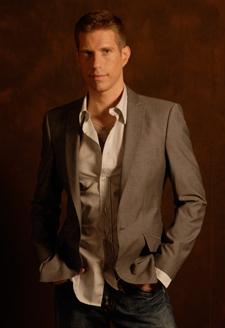Never count a superhero out. After dying an inglorious death in the ’90s with such stinkers as Judge Dredd and Batman and Robin, the superhero genre is back at the top of its game. People can’t seem to get enough of costumed freaks, from the suave playboy demeanour of Robert Downey Jr’s Tony Stark to the animal magnetism of Hugh Jackman’s Wolverine.
Teen readers, tired of seeing their favourite gay comic book characters get short shrift, might want to take a look at Queeroes (Jambor Publishing, 2009) by Steven Bereznai.
Bereznai’s debut book, Gay and Single Forever? was published in 2006, the year Bereznai was managing editor of fab magazine (prior to its acquisition by Pink Triangle Press, which publishes Xtra).
Bereznai, who describes his high-school self as a “gay geek,” says he knew his first foray into young adult fiction was going to involve sci-fi to some degree.
“When I was 13 I started writing my first book, which was actually a fantasy novel,” he says. “I was still struggling to come out back then and I told myself I wasn’t going to have any gay characters in my story, yet all these little gay subplots started popping out.”
Inspired by sharp-witted sci-fi shows like Buffy the Vampire Slayer and teen dramas like Gossip Girl, Bereznai crafts a relatively enjoyable read about a group of high-school teens from different cliques who gain superpowers after drinking contaminated water.
Troy Allstar, the emotionally repressed, closeted jock who works at Aberbombie and Stitch (one of a couple of cringe-worthy analogue brands in the book) can read emotions. Troy’s nerdy younger brother Gibbie, more at home in the world of Star Trek than at the gym, suddenly finds he can break through walls and run like The Flash.
Gay cheerleader Chad can transform into a werecat and his gal pal Mandy can disappear and erect force fields à la Susan Storm.
With clever storytelling, Bereznai focuses mainly on the problems that can’t be solved by super powers. After it appears that the contaminated water affected only homos, straight Mandy adopts the persona of a socially conscious, granola-crunching lesbian while still acting painfully shallow. Gibbie uses his strength to gain respect but remains socially awkward, unable to get clueless Chad to go on a date with him. Troy understands everyone’s emotions but his own.
Later in the book Queeroes gets past the stereotypes as the superteens are forced to confront their weaknesses, master their abilities and save the day.
Of course, no superhero book would be complete without interesting supervillains. Queeroes delivers both a hit and a miss. Bereznai is pretty formulaic with Devon, the angry gay goth who can reshape matter by touching it. Far more interesting is the downward spiral of Liza, a teased and tortured outcast whose words quite literally become weapons.
The story has a habit of jumping from light-hearted camp to much darker themes like drug use, death and suicide. In the second half of the book Devon teams up with Liza to capture unsuspecting victims and fuse their body parts together, creating grotesque works of “art.” The creations, starting with Devon’s mother, die hideous deaths, turning her once-pristine household into a torture chamber worthy of Josef Mengele. At the novel’s climax Devon shows up to battle the good guys wearing the corpse of Troy’s former football buddy and sloughs it off on Mandy, one tissue layer at a time. The Incredibles, it ain’t.
The portrayal — or rather nonportrayal — of sex in Queeroes seems a little odd. In an excerpt on the back cover, Chad recounts using his feline powers for “cruising guys.” In the book the passage reads differently, that Chad wants to “sniff down potential husbands.” During her lesbian exploratory stage Mandy resolves to “really do it” with Liza at a sleep-over but later confides to Chad that the two made out, which is presumably what she meant by doing it, except that it wasn’t.
Reading these and other ambiguous passages I can’t tell whether Bereznai wanted to avoid a potential outcry over his portrayal of teenage sexuality or to keep the story suitable for a wider age range. Either way the resulting romantic entanglements are neither subtle (for younger readers) nor well-developed (for older ones), causing relationships in the book to feel stunted and awkward. Mystique could take on multiple identities but Queeroes desperately needs to pull itself together and identify its target audience.
That being said, the book is still a fairly enjoyable romp that covers a lot of relevant themes to youth, gay and straight. The end of Queeroes leaves the door open for a sequel and hopefully Bereznai will follow through.
Steven Bereznai launches Queeroes at Fly (8 Gloucester St) from 8pm to 11pm on Fri, May 29.


 Why you can trust Xtra
Why you can trust Xtra


